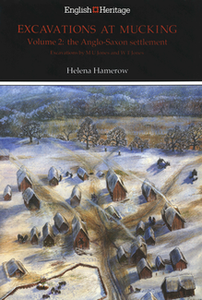English Heritage Archaeological Monographs
English Heritage, 2014. https://doi.org/10.5284/1028203. How to cite using this DOI
Data copyright © English Heritage unless otherwise stated
This work is licensed under the ADS Terms of Use and Access.
Primary contact
Historic England
The Engine House
Firefly Avenue
Swindon
SN2 2EH
Resource identifiers
- ADS Collection: 1416
- DOI:https://doi.org/10.5284/1028203
- How to cite using this DOI
Excavations at Mucking: Volume 2: The Anglo-Saxon settlement
Hamerow, H.
English Heritage (1993)
Abstract:

The complex multi-period archaeological landscape at Mucking provided the first opportunity, between 1965 and 1978, to excavate an Anglo-Saxon settlement and associated cemeteries simultaneously. With two cemeteries, at least 53 posthole buildings, and over 200 sunken huts (Grubenhauser), Mucking remains the most extensive Anglo-Saxon settlement excavated to date, and one of the earliest. The distribution of finds and pottery suggests a gradually shifting settlement, beginning in the early fifth century as a relatively dense group of buildings at the southern end of the site, then gradually moving northwards in the course of the sixth and seventh centuries. The latest recognisable phase datable at least to the end of the seventh century, consisted of a number of widely dispersed farmsteads. This report concentrates on the structures and artefacts from the settlement, and gives special consideration to developments in the ceramic assemblage. Specialist contributions examine the environment and technological evidence, for example plant and animal resources and metalworking technology. The discussion focuses on changes in the size and layout of this community, which was situated at the interface of the Anglo-Saxon kingdoms of Kent and Essex, its historical and geographical contexts, and its relationship to the preceding Romano-British landscape. This report includes a full inventory of the finds and pottery in their contexts.
Download monograph
| Excavations at Mucking: Volume 2: The Anglo-Saxon settlement, Hamerow, H., English Heritage (1993), ISBN: 9781848021730 | 62 Mb |





